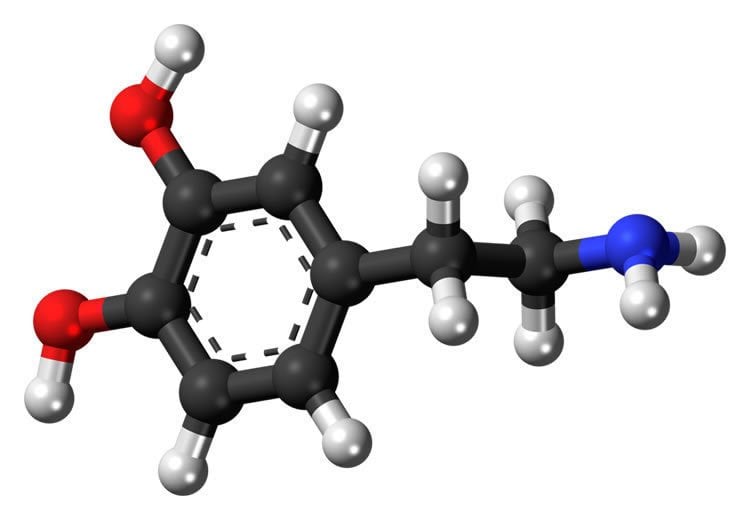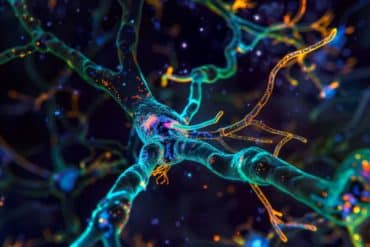Summary: Researchers report elevated dopamine levels may make those with schizophrenia rely more on expectations, which results in them experiencing auditory hallucinations.
Source: Columbia University Medical Center.
Researchers at Columbia University Irving Medical Center (CUIMC) and New York State Psychiatric Institute (NYSPI) found that people with schizophrenia who experience auditory hallucinations tend to hear what they expect, an exaggerated version of a perceptual distortion that is common among other people without hallucinations. Those with hallucinations and other psychotic symptoms are known to have elevated dopamine, the main area of focus for available treatments for psychosis, but it was unclear how this could lead to hallucinations. The researchers found that elevated dopamine could make some patients rely more on expectations, which could then result in hallucinations.
The findings, published recently in Current Biology, explain why treatments targeting the production of dopamine could help alleviate this condition.
“Our brain uses prior experiences to generate sensory expectations that help fill in the gaps when sounds or images are distorted or unclear,” said Guillermo Horga, MD, PhD, assistant professor of clinical psychiatry at CUIMC and a research psychiatrist at NYSPI. “In individuals with schizophrenia, this process appears to be altered, leading to extreme perceptual distortions, such as hearing voices that are not there. Furthermore, while such hallucinations are often successfully treated by antipsychotic drugs that block the neurotransmitter dopamine in a brain structure known as the striatum, the reason for this has been a mystery since this neurotransmitter and brain region are not typically associated with sensory processing.”

The researchers designed an experiment that induces an auditory illusion in both healthy participants and participants with schizophrenia. They examined how building up or breaking down sensory expectations can modify the strength of this illusion. They also measured dopamine release before and after administering a drug that stimulates the release of dopamine.
Patients with hallucinations tended to perceive sounds in a way that was more similar to what they had been cued to expect, even when sensory expectations were less reliable and illusions weakened in healthy participants. This tendency to inflexibly hear what was expected was worsened after giving a dopamine-releasing drug, and more pronounced in participants with elevated dopamine release, and more apparent in participants with a smaller dorsal anterior cingulate (a brain region previously shown to track reliability of environmental cues).
“All people have some perceptual distortions, but these results suggest that excess dopamine can exacerbate our distorted perceptions,” said Dr. Horga. “Novel therapies should aim to improve the processing of contextual information by targeting the dopamine system or downstream pathways associated with modulation of perceptual processing, which likely include the dorsal anterior cingulate cortex.”
Funding: Funding for this study was provided by grants K23-MH101637 (PI: Horga), P50-MH086404 (PI: Abi-Dargham), R21-MH099509 (PI: Abi-Dargham), and R01MH068073 (PI: Balsam) from the National Institute of Mental Health. Dr. Cassidy was supported by a post-doctoral fellowship from the Fonds de Recherche du Québec, Santé. Dr. Horga was additionally supported by a grant from the Sidney R. Baer Jr. Foundation. The authors declare no competing financial interests.
The other contributors from CUIMC and NYSPI are Clifford M. Cassidy, PhD, Peter D Balsam, PhD, Jodi J. Weinstein, MD, Rachel J. Rosengard, BA, and Anissa Abi-Dargham, MD.
Source: Eian Kantor – Columbia University Medical Center
Publisher: Organized by NeuroscienceNews.com.
Image Source: NeuroscienceNews.com image is in the public domain.
Original Research: Open access research in Current Biology.
doi:10.1016/j.cub.2017.12.059
[cbtabs][cbtab title=”MLA”]Columbia University Medical Center “Link Between Hallucinations and Dopamine Not Such a Mystery.” NeuroscienceNews. NeuroscienceNews, 16 February 2018.
<Play it Again: People Find Comfort Listening to the Same Songs Over and Over>.[/cbtab][cbtab title=”APA”]Columbia University Medical Center (2018, February 16). Link Between Hallucinations and Dopamine Not Such a Mystery. NeuroscienceNews. Retrieved February 16, 2018 from Play it Again: People Find Comfort Listening to the Same Songs Over and Over[/cbtab][cbtab title=”Chicago”]Columbia University Medical Center “Link Between Hallucinations and Dopamine Not Such a Mystery.” Play it Again: People Find Comfort Listening to the Same Songs Over and Over (accessed February 16, 2018).[/cbtab][/cbtabs]
Abstract
A Perceptual Inference Mechanism for Hallucinations Linked to Striatal Dopamine
Highlights
•Auditory hallucinations are linked to a perceptual bias toward uncertain expectations
•Elevated striatal dopamine function relates to the same pattern of perceptual bias
•Volume of dorsal anterior cingulate relates to the same pattern of perceptual bias
Summary
Hallucinations, a cardinal feature of psychotic disorders such as schizophrenia, are known to depend on excessive striatal dopamine. However, an underlying cognitive mechanism linking dopamine dysregulation and the experience of hallucinatory percepts remains elusive. Bayesian models explain perception as an optimal combination of prior expectations and new sensory evidence, where perceptual distortions such as illusions and hallucinations may occur if prior expectations are afforded excessive weight. Such excessive weight of prior expectations, in turn, could stem from a gain-control process controlled by neuromodulators such as dopamine. To test for such a dopamine-dependent gain-control mechanism of hallucinations, we studied unmedicated patients with schizophrenia with varying degrees of hallucination severity and healthy individuals using molecular imaging with a pharmacological manipulation of dopamine, structural imaging, and a novel task designed to measure illusory changes in the perceived duration of auditory stimuli under different levels of uncertainty. Hallucinations correlated with a perceptual bias, reflecting disproportional gain on expectations under uncertainty. This bias could be pharmacologically induced by amphetamine, strongly correlated with striatal dopamine release, and related to cortical volume of the dorsal anterior cingulate, a brain region involved in tracking environmental uncertainty. These findings outline a novel dopamine-dependent mechanism for perceptual modulation in physiological conditions and further suggest that this mechanism may confer vulnerability to hallucinations in hyper-dopaminergic states underlying psychosis.






